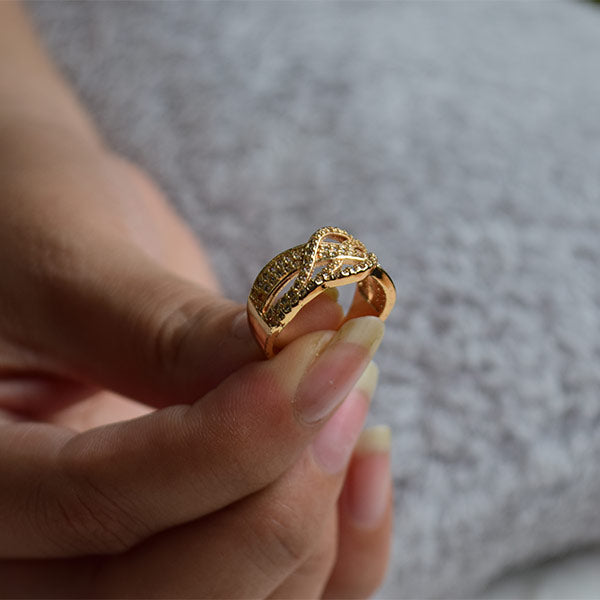
People enjoy skating, it’s just a fact of life. This fact is doubly true when it comes to skating on ice, but some problems can arise with that. Specifically, the fact that ice can be hard to come by in some parts of the country and in certain seasons. This is definitely a troubling fact for all of our ice-loving friends.
Now, you could always just go to an indoor ice skating rink. They have their perks, especially if you want to go somewhere and ice skate in July. But, what if you have the urge to go skating at midnight in August? Things get a little tricky really quickly if you ever have that urge.
That’s where synthetic ice comes in. Synthetic, or artificial, ice is a type of icy substance that can withstand temperatures that natural ice cannot. That makes it a great choice for anyone that wants to skate in the middle of July.
It’s also something that you can set up in your own home, which makes it ideal for a whole lot of reasons. Even though synthetic ice is something that’s well-known in a lot of ice skating communities, it’s not something that everyone knows a whole lot about.
Today, we’re going to explore what exactly synthetic ice is, how to skate on it, and how it compares to real ice. Hopefully, by the time you’re done with this article, you’ll have a solid understanding of these concepts and you’ll know whether or not you want to get your own synthetic ice skating rink.
The Basics: What is Synthetic Ice?
There’s a lot of confusion about what synthetic ice actually is. Everyone knows what true ice is, but synthetic ice is something different and much newer than natural ice. Newer by a couple of billion years, in fact. That means that humans have had a lot less time to become familiar with synthetic ice than true ice.
Now, let’s clear up any confusion that our wording might cause. This is a common bit of confusion and we do our best to be super clear so you don’t have to leave this article with any ambiguity. The kind of synthetic ice that we’re talking about is not chemically frozen ice. For the purposes of this article, we’re including that with natural ice, even if it’s not naturally formed.
The kind of synthetic ice that we’re talking about is actually made out of a chemically complicated plastic that has a glide factor compatible with ice. It’s been around for a while and has taken many forms as time has gone on.
The earliest kind of synthetic ice was actually created long before its time in England. Two men created it in hopes of becoming rich by providing people with the ability to ice skate in the middle of summer. Their plans, unfortunately, did not work out the way that they wanted.
They actually faced a small amount of financial ruin because of this. People simply didn’t stay excited about this for very long. After the invention of hockey, people started looking for ways to skate in the summer once again.
The early forms of this new synthetic ice were… messy, to say the least. People would need to slather this ice with lubricants in order to get any glide on them whatsoever. That lubrication needed to be replaced every once in a while.
If you’ve ever spilly any sort of lubricant on a surface and didn’t immediately clean it up, you’re probably aware of just how messy that really was. God forbid you fall on it. Most rinks that had this cleaned it regularly as well, but that’s a hard kind of mess to get out of your clothes.
Fast forward a few years and you get to the newer of the new synthetic ice tiles, and these newest ones are special because they don’t require any lubrication. That means less of a mess when you clean up, and less money spent on these specialized lubricants.
This is the kind of synthetic ice that you’ll find on the market today, and it’s made up of some very special kinds of plastic that have very long names that won’t make sense to anyone unless they have a degree in chemistry.
That brings us to the current state of artificial ice. If you go to the store or find a place that has this kind of synthetic ice in use, the newest kind is what they would be using. You’ll occasionally run into something that needs lubrication because they’re not entirely out of production, but generally, those are considered to be outdated.
What You Need to Know About Skating on Synthetic Ice
There’s a lot to know about synthetic ice, especially if you’re new to the world of this kind of ice. We’re going to use this section to go over some pros and cons of the use of synthetic ice so you can fully understand what you’re dealing with.
Let’s start with the pros:

- Portable, though not entirely easily.
- Full control over when you can skate.
- The ability to skate in hotter months, or to skate outdoors at all if you live somewhere like Arizona.
- Modular design that allows you to not break the whole rink apart if one tile has an issue.
- Skating at home is both fun and good exercise.
Next, the cons:
- Synthetic ice wears your blades down at about twice the speed as true ice.
- If you’re an avid ice skater you’ll be able to tell the difference.
- Potential to raise your homeowner’s insurance premium.
- Even greater potential for property damage if the skaters aren’t careful.
- A lot more drag than true ice.
- We needed to expand on this to make sure everyone knew why this was the case. When you skate on ice, the water melts and creates a thin film of water on the surface of the ice. That’s what gives you the gliding feeling. Synthetic ice does not melt and thus cannot provide the same sensation.
As you can tell, these are some strong points both for pros and cons. At the end of the way, it’s up to you if this is something that you think is worth the investment. It does cost a bit of money to get started, but once you have the tiles you have them for good, or until they break.
The Logistics of Setting Up a Synthetic Ice Skating Rink
If you’ve decided that you’ll probably want to move ahead based on the information that we’ve provided, you’re probably at least a little curious about the logistics of getting this kind of thing set up.
This isn’t too taxing of a task, but you’re going to want to think long and hard about placement. We typically recommend doing this in the backyard for several reasons:
- A wide-open space that has fewer things like walls and windows to break.
- A soft space like grass or dirt to fall on, rather than only being able to fall onto the ice or into a wall or window.
- Something out of the way from normal foot traffic so the ice isn’t in your way most of the time.
Where you put your synthetic ice skating rink is up to you though. You could put it in your bedroom and have your bed on top of it, that’s really the fun of being an adult. No one can tell you no if you want something badly enough.
In any case, getting the rink set up regardless of where you want to put it is pretty easy. Just measure out the space that you want to use and start assembling the tiles so you can have your rink wherever you want it to be.
The tiles are modular and they attach to one another pretty easily. Imagine a jigsaw puzzle with no wrong answers and you’ve roughly got what this process looks like. There are very few things in this world that are easier to do than setting up your synthetic ice skating rink.
It might be smart to do little things like putting a piece or several pieces of plywood under the tiles to make sure that everything is level and extra sturdy, but not everyone does that much. We do recommend it because it can extend the life of your tiles and make for a better and safer skating experience, but you could just put the tiles together and go for it.
Learn to Skate on Synthetic Ice
Knowing how to skate on synthetic ice can mean much better training in the summer months, and more training whenever you want. People enjoy the sense of freedom associated with this, and there is definitely a strong sense of freedom associated with being able to skate when you want.
Whether you’re training for the Stanley Cup or just enjoying the act of ice skating, knowing how to skate on synthetic ice can help you have more time for the hobby that you love the most whenever you want it, and there’s definitely something magical about that.







